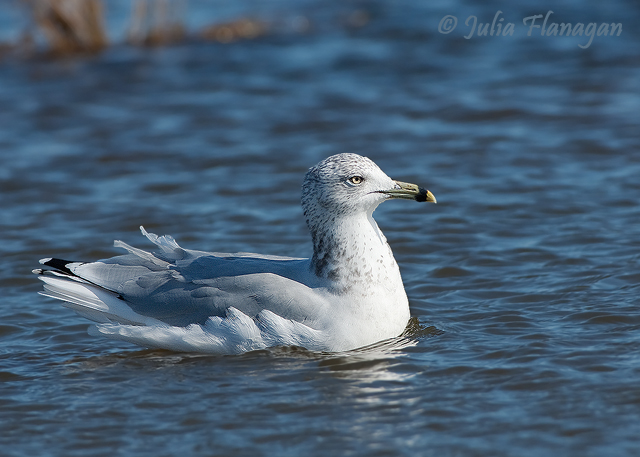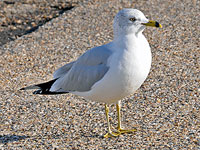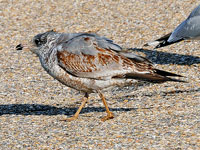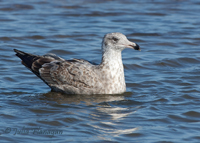
Ring-billed Gull The Ring-billed Gull is a winter visitor in Northern Virginia, where it may be found near ponds, lakes, and landfills. It will come to open areas where it can scavenge for food, and may sometimes be seen on the National Mall in Washington, D.C.! Adult birds are mostly white with a grey back and black-tipped grey wings. There is a black patch or ring near the tip of the yellow bill. At 16-21 inches long, they are smaller than the similar and better-known Herring Gull of the seashore, and may be best identified by their yellow, rather than pink, legs. Immature birds vary in appearance depending on their age, changing over several years from the greyish-brown spotted and streaked fledgling to something looking like the adult. These gulls inhabit the shores of lakes, ponds and rivers of the central parts of the northern United States and southern Canada, including the Great Lakes region. They eat a variety of items, including fish, insects, eggs, grain, rodents, and worms, as well as what they can scavenge at landfills, near restaurants, and in plowed fields, or what they steal from other birds, beachgoers, and picnickers. In the breeding season, they nest in colonies on the ground, often gathering on islands. Some colonies may contain tens of thousands of pairs! Both birds in a pair incubate the greenish-brown mottled eggs for about a month until hatching and then feed the young for another month until fledging. Ring-billed Gulls spend the winters inland in the southern USA and near the West, East and Gulf coasts into Mexico and in Cuba. So some come to find shelter and food in Prince William County. It would be inaccurate to call these birds "seagulls" because few of this species ever live by water saltier than the Potomac! |








